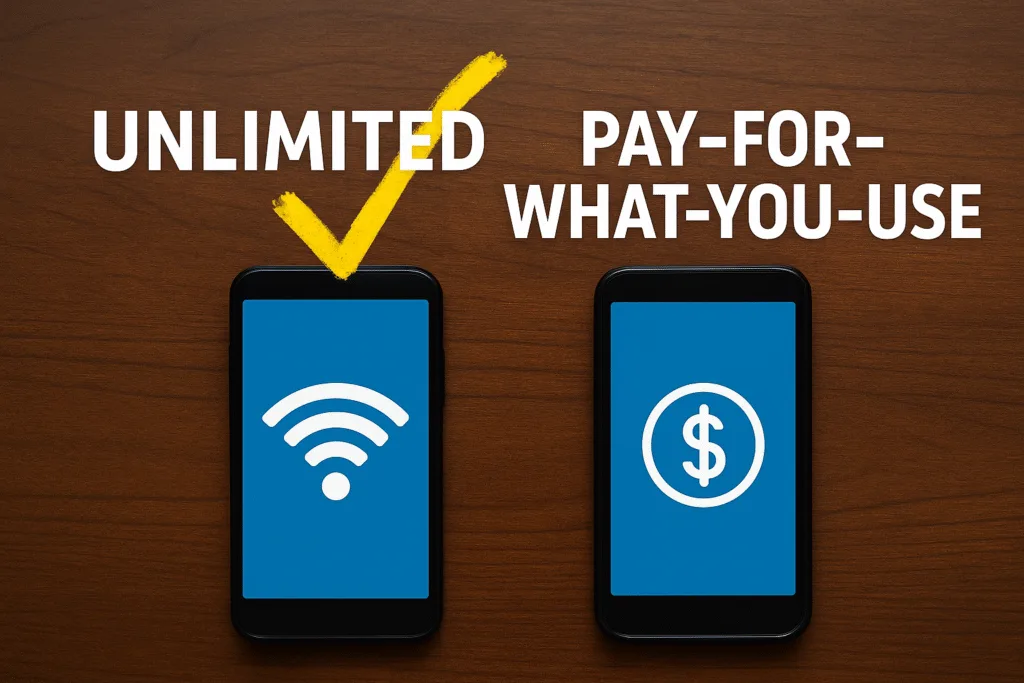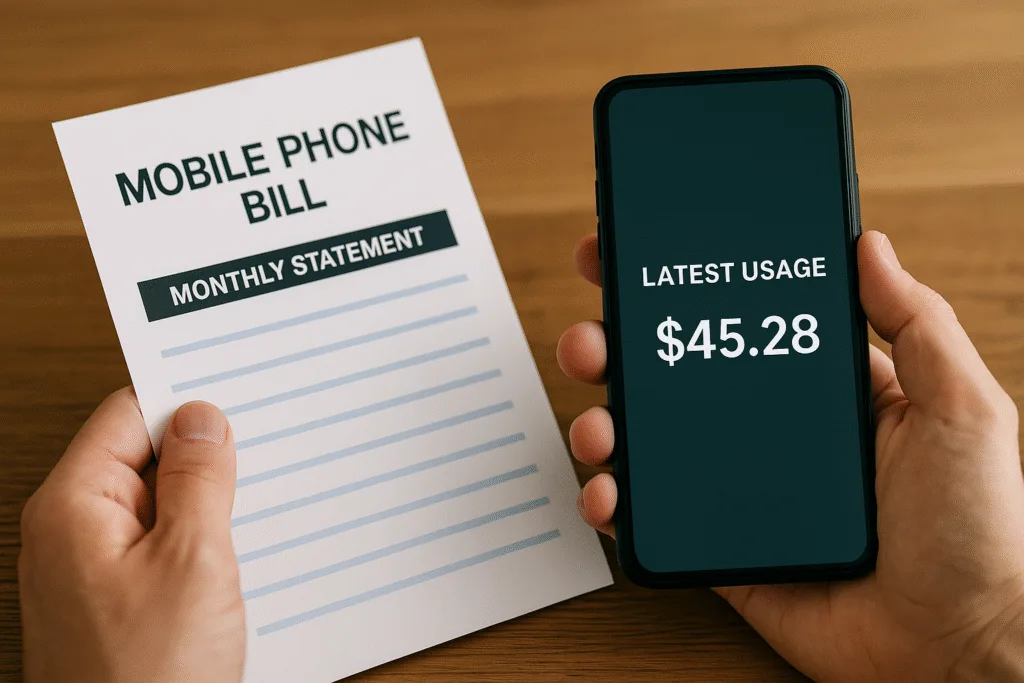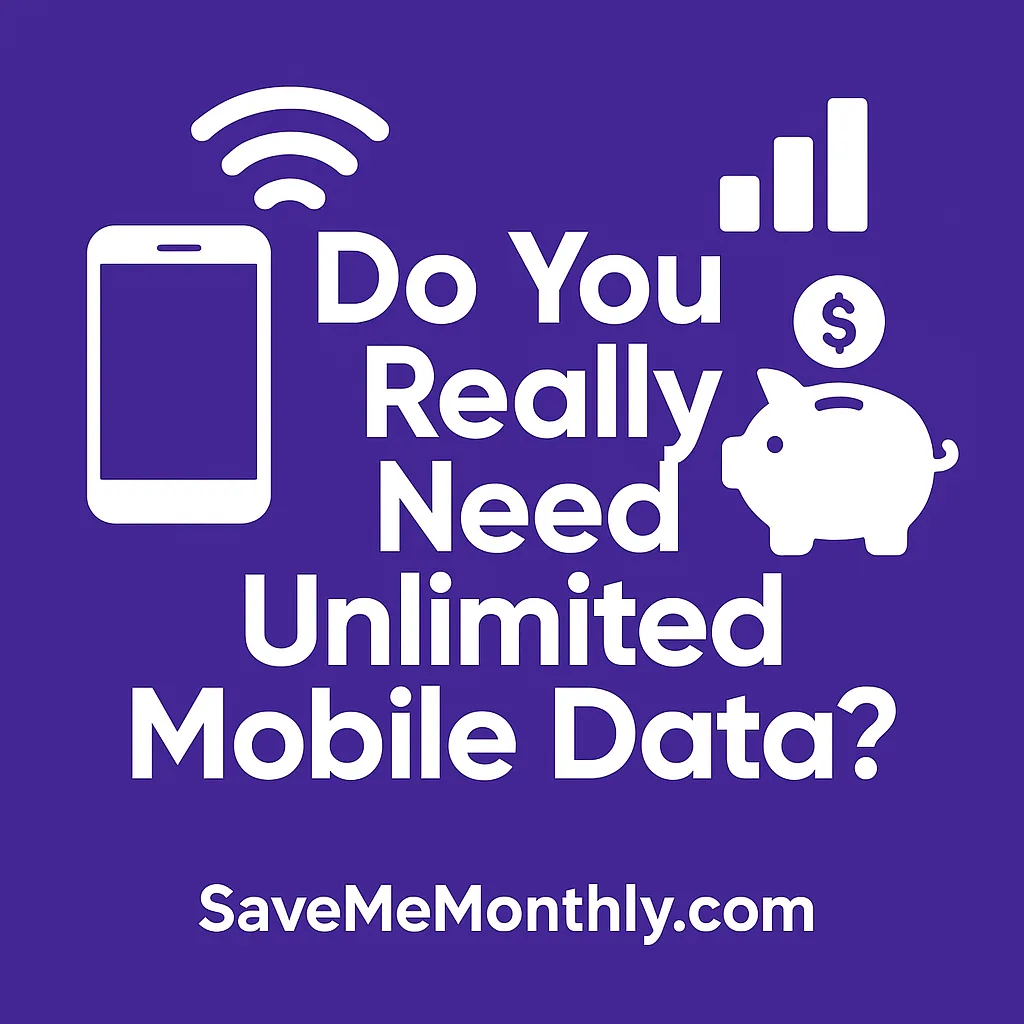Unlimited Data Plans: Smart Move or Sneaky Money Trap?
Unlimited data sounds like freedom: streaming, scrolling, gaming without limits. But for many people, it’s a pricey safety net they don’t actually use. Carriers love to sell it because it locks you into higher monthly bills, sometimes with sneaky fees hiding in the fine print. The real question isn’t whether unlimited exists (it does), but whether you personally need it. Spoiler: most people don’t.
I learned this the hard way. For years I paid extra for “peace of mind,” thinking my teenage YouTube binges would wreck the family plan. Turns out, we averaged half the data we paid for and still got throttled after a certain point anyway. Lesson learned: unlimited doesn’t always mean what you think.

How Much Data Do You Actually Use Each Month?
A quick reality check: the average U.S. smartphone user chews through around 15–20GB of data monthly (Statista, 2024). But if you’re mostly on Wi-Fi at home, work, or school, your actual cellular use may be closer to 5–10GB. Step one: check your past three bills. If your usage barely scratches your cap, you’re overpaying for unlimited.
Here’s a rule of thumb:
- Stream music = ~150MB per hour
- Stream HD video = ~3GB per hour
- Scroll socials = ~100–200MB per hour
If most of that happens on Wi-Fi, unlimited isn’t buying you much.

The Hidden Costs of Unlimited Data Plans
Carriers advertise “unlimited,” but read the fine print:
- Data throttling: Speeds drop after 20–50GB, making video nearly unwatchable.
- Extra hotspot fees: Some “unlimited” plans limit hotspot usage or charge extra.
- Hidden taxes and surcharges: $5–$15 can sneak onto your bill monthly.
Those add-ons quickly turn a $60 plan into an $85 headache. Always scroll down to the “fees and surcharges” line before signing.

Cheap Unlimited Plans vs. Pay-for-What-You-Use
If you truly need unlimited (heavy gamer, remote worker, constant traveler), prepaid carriers like Mint Mobile or Visible often offer $25–$45 options, less than half the cost of big-name plans. Otherwise, a mid-tier 10–20GB plan might save you $20–$40 every single month. Multiply that by 12 months and you could keep $240–$480 in your pocket.
Think of it this way: Unlimited = buffet dining. Great if you’re a bottomless pit, but expensive if you’re just nibbling a salad.

Practical Tips to Cut Your Phone Bill Today
- Audit your data: Review usage in your carrier app or past bills.
- Use Wi-Fi smartly: Auto-connect at home, office, coffee shops.
- Compare MVNOs (low-cost carriers): They piggyback off major networks at lower prices.
- Ask about loyalty discounts: Some carriers quietly offer $10–$20 off if you threaten to switch.
- Share a family plan: Per-line costs drop significantly when split.
Small steps can chop $30 or more off your monthly bill without sacrificing coverage.
External Resources
- FCC: Understanding your phone bill
- CNET: Best cell phone plans for 2024
- Consumer Reports: Avoiding hidden fees
Related Posts:
- eSIM vs Roaming Cost: The Ultimate 2025 Travel Guide
- Should I Upgrade My Phone or Keep It? Money-Saving Tips
- The Truth About Unlimited Data Cell Phone Plans: Do You Really Need It?
- Strange Taxes and Fees on Bills – What’s Legit & What’s Junk?
- Best Value Cell Phone Plans: Save Big Without Losing Coverage
Disclaimer
SaveMeMonthly.com provides general money-saving info, not financial, legal, tax, insurance, or professional advice. Offers, rates, and terms change and vary by location. Always confirm details with the provider before you buy. We may earn a commission from some links at no extra cost to you. Trademarks belong to their owners. Your choices are your responsibility.


Leave a Reply